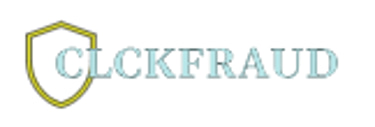The Hidden Costs of Click Fraud and How to Protect Your Business
Click fraud is not just an inconvenience—it is a silent drain on advertising budgets, campaign performance, and business growth.
11/17/20253 min read
Click fraud is not just an inconvenience—it is a silent drain on advertising budgets, campaign performance, and business growth. Every year, advertisers worldwide lose billions of dollars to fraudulent clicks. While many businesses focus only on visible costs, the hidden consequences of click fraud are often far more damaging. Understanding these hidden costs is essential to protecting your business and ensuring your ad spend drives real growth.
The Financial Impact Beyond Budget Waste
At its most basic level, click fraud wastes money by inflating the number of paid clicks on your ads without delivering real customers. But the financial consequences run deeper:
Reduced ROI: Every fraudulent click drives down the return on investment of your campaigns, making your ads appear less effective.
Increased CPC: Fraudulent activity can drive up competition in auctions, forcing you to pay more per click.
Wasted Opportunity: Money spent on fraudulent clicks is money not spent attracting genuine leads who could convert into paying customers.
According to industry research, click fraud costs businesses an estimated $35–40 billion annually worldwide, with a significant portion of that affecting Google Ads advertisers in the United States.
Distorted Analytics and Misleading Data
One of the most damaging hidden costs of click fraud is the way it distorts analytics. Marketers rely on accurate data to make campaign decisions, optimize ads, and allocate budgets. Fraudulent clicks create misleading signals:
Artificially High CTR: Click fraud inflates click-through rates, making ads seem more engaging than they truly are.
Skewed Conversion Rates: A surge in clicks without conversions makes it difficult to determine which keywords, ads, or audiences are performing.
Misguided Strategy: When data is corrupted, businesses risk making wrong decisions, such as pausing campaigns that are actually profitable or investing more in underperforming ads.
In essence, fraudulent traffic erodes trust in your data and compromises your ability to make informed marketing decisions.
Damage to Brand Reputation
Click fraud doesn’t just affect numbers—it can harm your brand’s reputation. If bots or malicious actors repeatedly click your ads, potential customers may never see them, reducing your visibility. Worse, in some cases, fraudsters use malicious clicks to trigger irrelevant placements, lowering the quality score of your campaigns. Over time, this can reduce trust in your brand and weaken its market position.
Increased Operational Costs
Fighting click fraud often requires additional tools, resources, and human oversight. Businesses may need to invest in specialized software, hire analysts, or dedicate time to monitoring suspicious traffic. These operational costs, while necessary, add to the overall burden of click fraud and can strain smaller businesses with limited resources.
How to Protect Your Business Against Hidden Costs
Fortunately, businesses can reduce the hidden costs of click fraud with proactive strategies:
Use Fraud Detection Tools: Platforms like https://clckfraud.com/ provide real-time monitoring and automated protection.
Monitor Analytics Closely: Watch for spikes in CTR without conversions, repeated clicks from the same IP, or abnormally high bounce rates.
Implement IP and Geo Blocking: Restrict ads from showing in regions or to users that consistently generate fraudulent activity.
Adopt AI and Machine Learning Solutions: AI-powered systems adapt quickly to evolving fraud tactics and provide advanced behavioral analysis.
Educate Your Team: Ensure marketers and analysts are trained to recognize the signs of fraudulent activity and respond effectively.
Case Study: E-Commerce Brand
An e-commerce brand in the U.S. noticed unusually high CTRs on their Google Ads but struggled to generate conversions. Upon closer inspection, they discovered that 30% of their ad spend was being wasted on fraudulent clicks from automated bots. By implementing an AI-powered fraud detection solution, they reduced fraudulent traffic by 80%, reclaimed thousands in wasted ad spend, and significantly improved ROI.
The Future Outlook
As fraudsters adopt more sophisticated techniques, the hidden costs of click fraud will continue to rise. Businesses must take a proactive stance, leveraging advanced technologies and multi-layered strategies to protect their budgets and data integrity.
Conclusion
Click fraud is more than wasted clicks—it’s a hidden threat that undermines budgets, analytics, reputation, and growth. By understanding the hidden costs and implementing strong prevention strategies, businesses can safeguard their advertising investments and focus on driving genuine results. Staying proactive is the key to ensuring that every dollar spent on ads delivers measurable value.
Click fraud silently erodes profits across industries. Detect early warning signs with Detecting Click Fraud Early: Key Signs and Tools Every Advertiser Needs.
For technical solutions, see Protection Methods: IP Blocking, Machine Learning, and Behavioral Analysis.
To implement layered defenses, check Layered Strategies for Preventing Click Fraud and Maximizing ROI.
See also:
Click Fraud: What It Is and How to Protect Your Google Ads Budget
Top Strategies to Prevent Click Fraud and Safeguard Your Ad Spend
Click Fraud in E-Commerce Campaigns: The Silent Profit Killer
